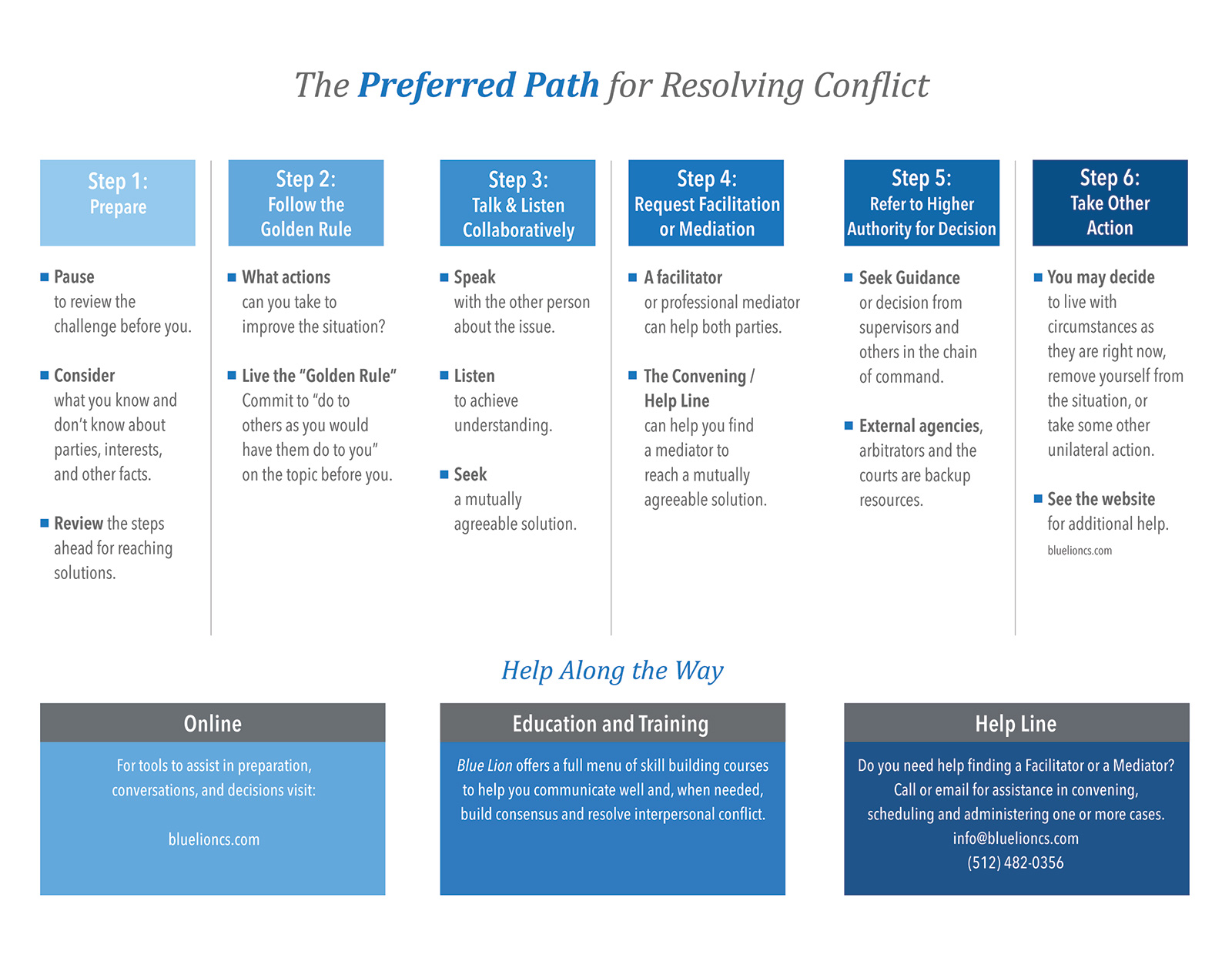Whether your goal is to enhance communication, build consensus on a specific topic, or resolve conflict involving individuals and/or groups, the Preferred Path steps offer a road map for achieving more satisfying, less costly, and more durable outcomes.
The steps can be applied unilaterally, with no cooperation from “the other side”. Or you can use this site with other individuals and groups as a common guide and point of reference.
The steps on the Preferred Path can be group into beginning, middle, and last resort phases.
- Steps 1 and 2 are for preparation, reviewing what you already know, planning to collect new information, and honoring civility as you get underway.
- Steps 3 and 4 are the engagement steps: listening and speaking directly with another person or group, with the option of facilitation or mediation by mutually agreeable third party if that is needed.
- Steps 5 and 6 are for decisions by higher authorities, and as back up, a range of other actionsthat may be taken if the matter is not resolved through the first five steps.
While you can “loop forward” at any time, experience suggests it’s best to follow the steps in order.]

